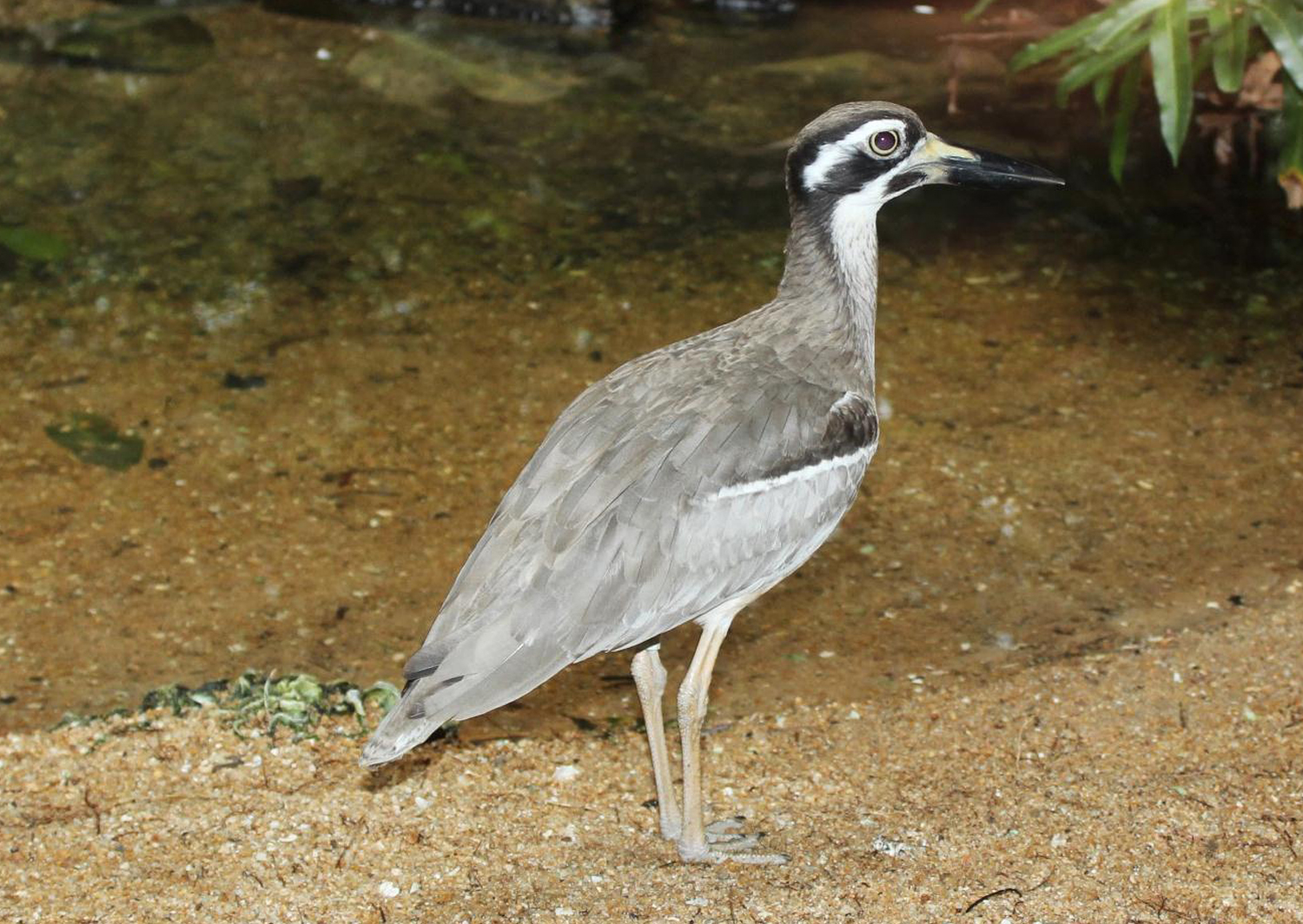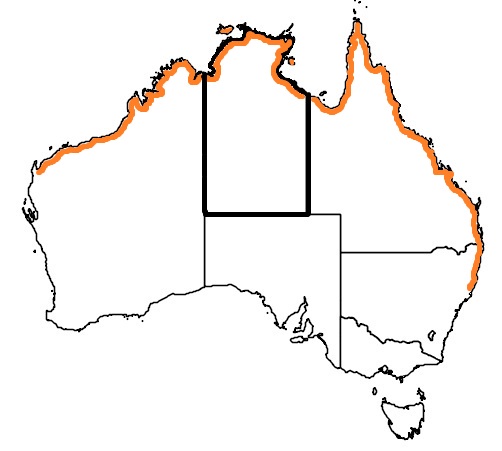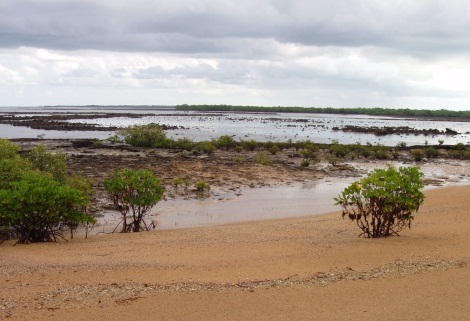Scientific name NT Conservation Status  | 
|
Distribution map | Body 560mm Weight 900-1100g Factsheet Beach-stone curlew PDF (688.8 KB) |
Identification
Beach Stone-curlews are large, ground-dwelling birds with massive uptilted bills, large yellow eye, upper body is predominately grey-brown with distinctive black and white patterning on the face and shoulder and stout legs.
Behaviour
It is less nocturnal than most stone-curlews, and can be seen foraging in daylight, moving slowly and deliberately. Birds tend to head bob when agitated. They stalk prey in the shallows or around rocks.
Reproduction
A single egg is laid directly onto the sand in a shallow scrape. The chick will stay with the parents for 18 months and help raise the following years chick.
Habit
Beach Stone-curlews prefer sandy shores and rocky areas along coastal and mangrove mudflats.
Threats
Habitat Loss, humans, feral dogs, ATV, feral pigs




